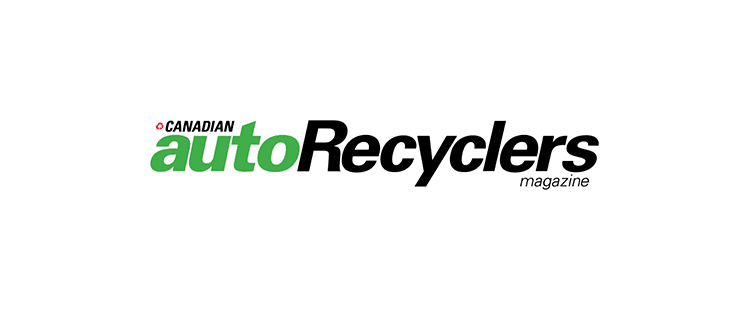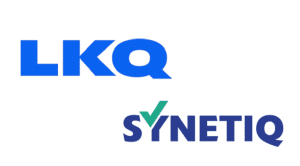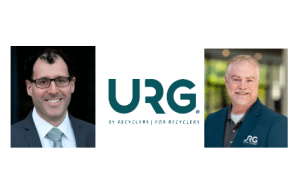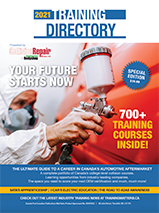Toronto, Ontario — July 18, 2011 — The CCIF and ARC have issued the following summary of their recycler, repairer, and insurer breakfast summit that was held in June.
Purpose
To define and establish consensus on the issues that matter to all parties concerning the use of recycled parts in collision repair and to establish a plan for addressing them.
Presentations
Presenters and panellists: Victor Pasnyk of Allstate Insurance, Larry Jefferies of CARSTAR Automotive, Philippe Fugère of Lecavalier Auto Parts and Dominic Vetere of Dom’s Auto Parts.
Key points from panel discussion and presentations:
An Insurer’s Perspective – Victor Pasnyk
Current View:
* 1.2M vehicles are scrapped in Canada annually, potentially providing a healthy supply of salvage.
* Very competitive market between aftermarket and recycled parts. OE parts are sometimes competitive with the alternatives, but data doesn’t show the reason for OE parts choice.
* Recyclers play a role in repair cycle time, so availability and speed of delivery are important.
* Currently these factors vary across the country, for example with challenges in Eastern Canada and Alberta in terms of availability, while supply and quality seems good in Ontario and Quebec.
* Important to educate vehicle owners on the reasons for using recycled parts. Choice of language and consistent messaging also important. Recyclers need to take ownership of this initiative.
* Estimating systems and specialized software are helpful tools, but many repairers still feel the need to call to the recycler to verify quality and availability.
* Accuracy very important, particularly the year. For example if the repair vehicle is 2003, the recycled part cannot be older.
Barriers to Greater Use of Recycled Parts:
* Convincing the vehicle owner – all stakeholders must play a role in this.
* Accuracy of parts descriptions – standards exist, but there is still room for greater clarity and detail, e.g. standards regarding “included parts” with front clips or door assemblies.
* The added cost of unexpected “clean up” times
Opportunities:
* Recycled parts counter staff need to be engaged, asking the right questions and assisting the appraiser to identify other alternative parts opportunities.
* Information providers keep improving access to recycled parts inventory, e.g. national live inventory, 360° imaging.
* Total loss numbers continue to rise, but this undesirable trend should motivate consideration of more economical, quality alternative parts utilization in order to render more vehicles repairable.
A Collision Repairer’s Perspective – Larry Jefferies
Current View:
* Recycled parts usage has increased slightly in recent years to 11-13% of total parts value.
* Repairer consolidation creating opportunities for more structured relationships with parts suppliers.
* Recyclers able to demonstrate “best in class” qualities more likely to succeed with consolidators.
* Key Performance Indicators (KPIs) are being used by insurers to measure and monitor the performance of their repairers in terms of severity (total cost), repair/replace times, cycle time (e.g. time from arrival of damaged vehicle in shop to delivery).
* Vehicle complexity increasing and making parts selling more difficult. Need for recycler training.
* Too much reliance on telephone to discuss quality, parts included, price etc. Highly inefficient.
Barriers to Greater Use of Recycled Parts:
* Lack of certainty on quality, price and consistency. Why buy a recycled part if alternatives provide greater certainty for the same price?
* Why buy a recycled part if the dollar or percentage margin is less than that for an alternative part?
* Repairers want to repair more vehicles, but opportunities are decreasing as total losses rise.
Opportunities:
* Address the pricing model. Repairers need same gross profit margins on recycled parts as aftermarket and OE parts.
* Important to have efficient communications tools available and to adapt to market trends in parts procurement for OE and Aftermarket parts. Work in harmony with the technology providers. Repairers and insurers should address ease-of-doing business issue between all parties.
* Live on-line recycled parts availability with 360° views would encourage greater use.
* Demonstrate to repairers that recycler staff are educated/qualified in understanding their needs.
* The parts that can reduce total losses (air bags) need to be addressed with insurers and a solution found. Find a solution to their key issue of liability.
* Recycler customer service to become more professional in customer handling, clarity of communication and consistency in using established grading and standardized descriptions.
* Switch from “wrecking yard” terminology and image to “recycler” and “green” would be a positive step in changing attitudes.
A Recycler’s Perspective – Philippe Fugère and Dominic Vetere
Current View
· Quality Parts: Standards and standardized descriptions exist. Must use them.
· Pricing based on supply and demand plus history.
· Availability – used to be local, but now global. Large quantity of salvage being shipped out of province and country, resulting in quality parts shortages.
· Cycle times: No back orders – If you see it, we have it.
· Airbags – systems exists – BC & QC recent developments. Working towards incorporating recycled OEM air bags into the repair process will lower vehicle total losses considerably.
Barriers to Greater Use of Recycled Parts:
Recyclers’ image – i.e. junk yard, barking dog etc.
Opportunities:
Become more professional in customer service / ask the right questions / become one-stop shop.
Appropriate packaging to reduce damage.
Stakeholders to develop better understanding of each other.
Group Discussion
In the open forum that followed the presentations and panel discussion, there was consensus on the issues raised as barriers and opportunities:
· Profitability – repairer need for adequate margin, plus efficient procurement process.
· Recycler Training and Engagement:
– Customer responsiveness / understanding repairer needs and insurer demands.
– Technical issues, vehicle technology, repair technology – Engage I-CAR.
– Consistent application of existing grading standards. Understand meaning of “insurance grade”
· Education of vehicle owner on “Green Parts” OE recycled parts.
· Potential recycled airbag accreditation – reduces total losses and repair costs.
· Learn from experience and different salvage/recycled parts use models across the provinces and around the world.
· Use IT to make parts availability, visibility and quality consistent enough to eliminate need for telephone calls. 360° views, live inventory.
· Consider ways to increase the flow of available salvage vehicles to the Canadian and local markets.
Conclusion
One outcome of this meeting was clarity on the key issues and agreement between the principal stakeholders, i.e. insurer, collision repairer, recycler, on the maintaining the momentum to address them in a collaborative way. Therefore, it was agreed that a Recycled Parts task force would be established to develop an action plan designed to overcome the barriers and to exploit the opportunities identified and agreed at this meeting.
The following people volunteered to join the task force which will be co-ordinated by Mike Bryan of CCIF and Steve Fletcher of ARC. Once the task force has defined its initial goals and action plan, it will communicate these and its progress to all stakeholder groups through CCIF, ARC and the trade press.
Recycled Parts Task Force:
Insurers:
Victor Pasnyk Allstate
Joe Da Cunha Allstate
John Sankey Intact
Collision Repairers:
Larry Jefferies CARSTAR Automotive
Terrance Bradimore C.K. Collision Centres
Mike Kaplaniak Fix Auto
Recyclers
Philippe Fugère Lecavalier Auto Parts
Dominic Vitere Dom’s Auto Parts
Benjy Katz LKQ
Michael Carcone Carcone’s Auto Recycling
Mike Maio Boston Auto Wreckers
Service Providers
Kirk Monger Hollander
Diane Chaine Progi-Pac
Tim Malone Mitchell
Michel Caron Audatex
Roger Schroder Car-Part.com


























